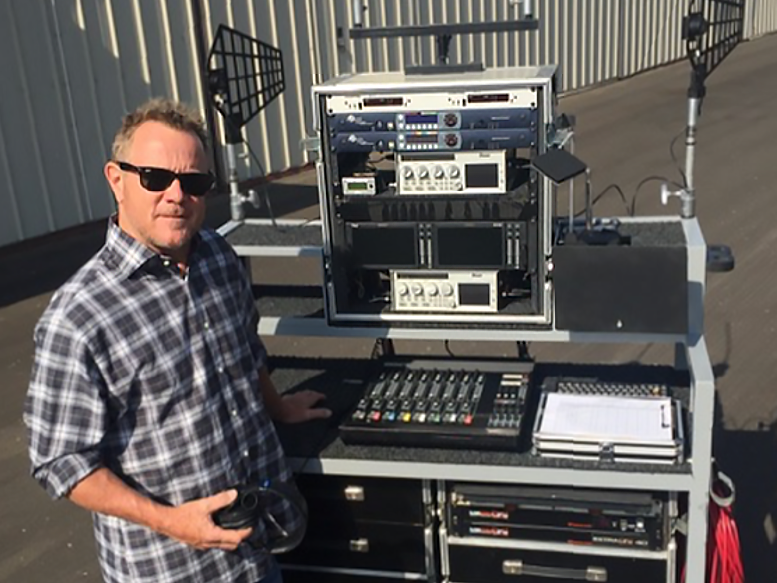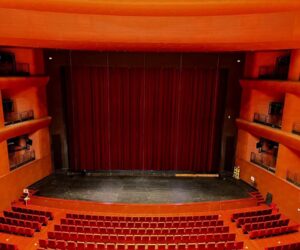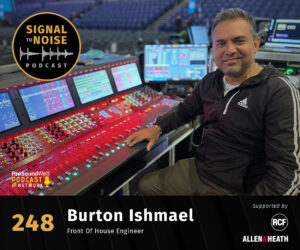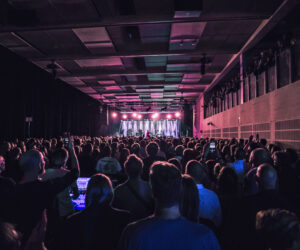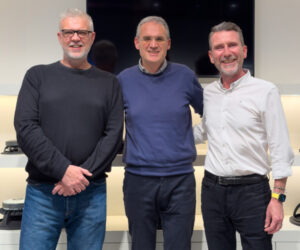Production sound mixer Geoffrey Patterson, who over the course of 40 years has been a two-time Academy Award nominee, a nine-time Emmy nominee, and a 12-time nominee and three-time winner of the Cinema Audio Society Award for Best Sound, has utilized Lectrosonics wireless gear exclusively throughout his career.
Patterson has mixed films including Twister, The Usual Suspects, Transformers: Revenge of the Fallen, The Wedding Planner, Friends with Benefits, Along Came Polly, Apt Pupil, and many more. A sampling of his TV credits comprises Westworld, Deadwood, True Detective, Perry Mason, and Bosch. At the end of 2021, he traded field work for mentorship, becoming professor of Production Sound at USC’s School of Cinematic Arts.
His Lectrosonics kit includes SMQV transmitters, the Venue receiver series, and many other members of the Digital Hybrid Wireless family for recent work. In fact, he has used almost every generation of the company’s wireless gear, as his stable began with the original VHF Quad Box, then the UHF Six-Pack, then the first generation of SM-series transmitters, and almost every product thereafter — experience that puts him in a unique position to talk about the evolution of wireless and sound-for-picture.
“For most of its 100-year history, production — not to mention designing and manufacturing the tools for it — had been a relatively small business,” he explains. “Things slowly started to change in the 1960s with more portable cameras from makers like Arri and Panavision allowing more freedom of movement and hence creativity. That coincided with the arrival of the Nagra audio recorder, which ushered in sound being recorded separately from the camera, albeit on a single monaural track. As for multitrack recording, the Beatles and the Beach Boys were already using it creatively, but it would take the film sound world another 50 years of evolution.”
Even given these developments, notes Patterson, the first wireless mic systems weren’t up to today’s standards: “I started as a boom operator in Hollywood around 1980, and it was at that point that wireless mics were just starting to be used. The radios were big and clunky, had limited range, were prone to interference, and had middling audio quality. Lavalier mics were also large and made to be worn on newscasters’ lapels, not hidden under actors’ wardrobe. So, sound mixers avoided using radio mics.”
Except, he adds, for early trailblazers who saw them as creative tools. “Two of the best mixers I ever worked for were David MacMillan and Jim Webb,” says Patterson. “Webb was a very early pioneer in multi-track recording, having done several films with director Robert Altman. MacMillan had the Midas touch. He just knew how to make films sound good. He was never afraid of multiple radio mics and blending them in and out of the booms. They both encouraged me to start mixing, which I did in 1990. My first wireless purchase was the Lectrosonics VHF Quad Box, which housed four receivers in a single package. It would become ubiquitous in the film sound world.
“I worked hard to learn how to make radio mics sound like wired boom mics, and how to play them against and with each other. When was the best time to hard-cue scenes? How should one EQ wireless? It was during this time that I adopted my approach to always ‘force’ the perspective — to make all the dialogue in a scene match what a well-placed boom would sound like.
Patterson had a hunch that Lectrosonics’ quality would give him an edge, and he wasn’t disappointed. “In the early 1990s, Lectrosonics introduced UHF and that was a game-changer,” he recalls. “The improved reception and quality led me to buy a ‘six-pack’ of Lectro receivers, plus I added several loose receivers for run-and-gun work. The Lectrosonics Six Pack consisted of six receivers in a nicely machined aluminum case that had a built-in power supply and antenna multi-coupler.”
Patterson goes on to recount the shift from single- to multi-camera shoots as the norm, as well as the explosion of multi-track recorders designed for picture sound. He explains how this one-two punch both created and served a central expectation of audiences.
“Camera angles can bounce all over the place, but the sound needs to be one continuous thread that cuts like butter,” he emphasizes. “In other words, audiences expect everything to sound like a close-up. Nothing takes an audience out of a story faster than bad sound.”
To meet this need, Patterson says that Lectrosonics equipment helps serve his technique of “forcing perspective” better than Lectrosonics. “First and foremost, it’s all about reception. I don’t care how good a radio transmitter/receiver pairing sound if their transmission distance and reliability are not the best. Lectrosonics always gave me the best reception. Second, they sounded great.”
Third might be dynamic range, as Patterson recounts from an unforgettable shoot. “Cary Fukunaga’s Beasts of No Nation is a film about child soldiers in Ghana,” he says. “I would run the SMQV at audio level 4. That is not a typo. I never had to alter the level. We would repeatedly shoot scenes that involved full-load bursts from an AK47, followed by whispered dialogue, followed by more gunfire. I was able to get all the dialogue without any noise, and the transmitters still held up distortion-free to the thunderous automatic rifle bursts.”
Even though Patterson has now traded such harsh conditions for the relative calm of the college lecture hall, he says he stands behind the gear that stood up to those conditions to his students. “In my upper-level undergrad and graduate production classes, I demonstrate and convince them to use Lectrosonics on their films. Once they do, they’re hooked. If you went to culinary school at Le Cordon Bleu, you wouldn’t train with a toy Easy Bake Oven.”
Read the full interview with Geoffrey Patterson on the Lectrosonics website here.


